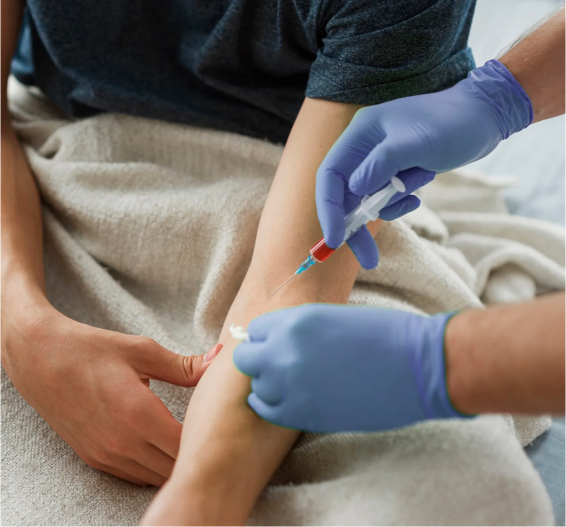ATLANTIC INTEGRATIVE MEDICINE
PRP Treatments In Chesapeake & Harrisonburg, VA
Platelet Rich
Plasma Treatment of Musculoskeletal Problems
The Platelet Rich Plasma or PRP is a medical treatment being used for a wide range of musculoskeletal problems. Platelet rich plasma refers to a sample of blood plasma that has as much as eight times more than the normal amount of platelets. This treatment enhances the body’s natural ability to repair itself and is used to improve healing and shorten recovery time from acute and chronic soft tissue and joint injuries.
Schedule online. It's easy, fast and secure.
BOOK NOW
What conditions can be treated with PRP?
Elbow Pain
- Tennis Elbow
- Golfer’s Elbow
- Ulnar Collateral Ligament (UCL) strain
Shoulder Pain
- Osteoarthritis
- Rotator Cuff Tendonitis
- Bursitis
- Partial Tears
- Torn Labrum
- Biceps Tendonitis
Knee Pain
- Osteoarthritis
- Meniscus Tears
- Chondromalacia Patella
- Patellar Tendonitis
- Cartilage Defect
- Sprains — MCL and LCL
Wrist/Hand Pain
- Osteoarthritis
- DeQuervain’s Tenosynovitis
- TFCC Tear
Hip Pain
- Osteoarthritis
- Torn Labrum
- Trochanteric Bursitis
- Hip Tendonitis
Ankle/Foot Pain
- Achilles Tendonitis and partial tear
- Plantar Fasciitis
- Ankle Instability and ligament injury
Low Back Pain
- Sacro-iliac Joint Pain or Instability
Frequently Asked Questions
Connective Tissue Supplementation
PRP is performed on an outpatient basis in the office setting. You will want to avoid taking any anti-inflammatory medication or steroids for at least one week prior to PRP treatment as these medicines can negatively affect platelets. Treatment with PRP is separated into two steps: preparing the PRP for injection followed by injecting the PRP into the affected area. First, two tablespoons of blood are drawn from your arm. The blood is placed into a centrifuge which spins the blood fast enough to separate it into layers based on weight. Heavier parts (e.g., red blood cells) stay on the bottom. Platelets and white blood cells spin out just above the red blood cell layer. Plasma fluid makes up the top layer. The middle layer containing the concentrated platelets is collected and will be used for injection. Once you have had your blood drawn, the sample is prepared right away followed by injecting the PRP the same day. You will not be asleep during the procedure.
Numbing agents such as lidocaine or marcaine may be used to decrease the injection pain. The whole process typically takes less than one hour. It is critical that the platelets are injected accurately into the area of injury to have maximal effect. The vast majority of patients only require a single PRP injection. However, some patients may require up to 2 or 3 PRP injections separated by 6-8 weeks to achieve desired results.
After PRP injection into your joints, there is usually minimal pain. However, with PRP injection into tendon, there is typically moderate pain for the first few days that may require prescription pain medicine. Typically, PRP injections into tendon will require immobilization for a few days after the procedure. Once you return home, you can use ice over the injected area, elevate the leg or arm and limit your activities as much as needed to remain comfortable. You will need to avoid all non-steroidal anti-inflammatory drugs (NSAIDs) such as ibuprofen, naprosyn, Motrin, Advil, Aleve, Celebrex and Mobic as these can block the effect of the platelets.
Improvement after PRP injection does not happen overnight. Growing new tendon and healing tissue take time. Most patients see some improvement at one month. But, full improvement can take 10-12 weeks or longer. After tendon PRP, you will typically need physical therapy to help regain motion, strength, and function.
We Accept and Maximize
Medicare and Most
Insurances
We are proud at Atlantic Intefgrative Medicine to accept most commercial insurances as well as Medicare, and we work closely with each patient to maximize their insurance benefits to minimize out-of-pocket costs. Our insurance network includes Original Medicare (red, white, and blue card), Medicare plus secondary insurance (Plan F, Plan G), commercial PPO insurance (Blue Cross, Aetna, Cigna, United Healthcare, TriCare, or another insurance). Feel free to call our team if you have a question about your policy!











